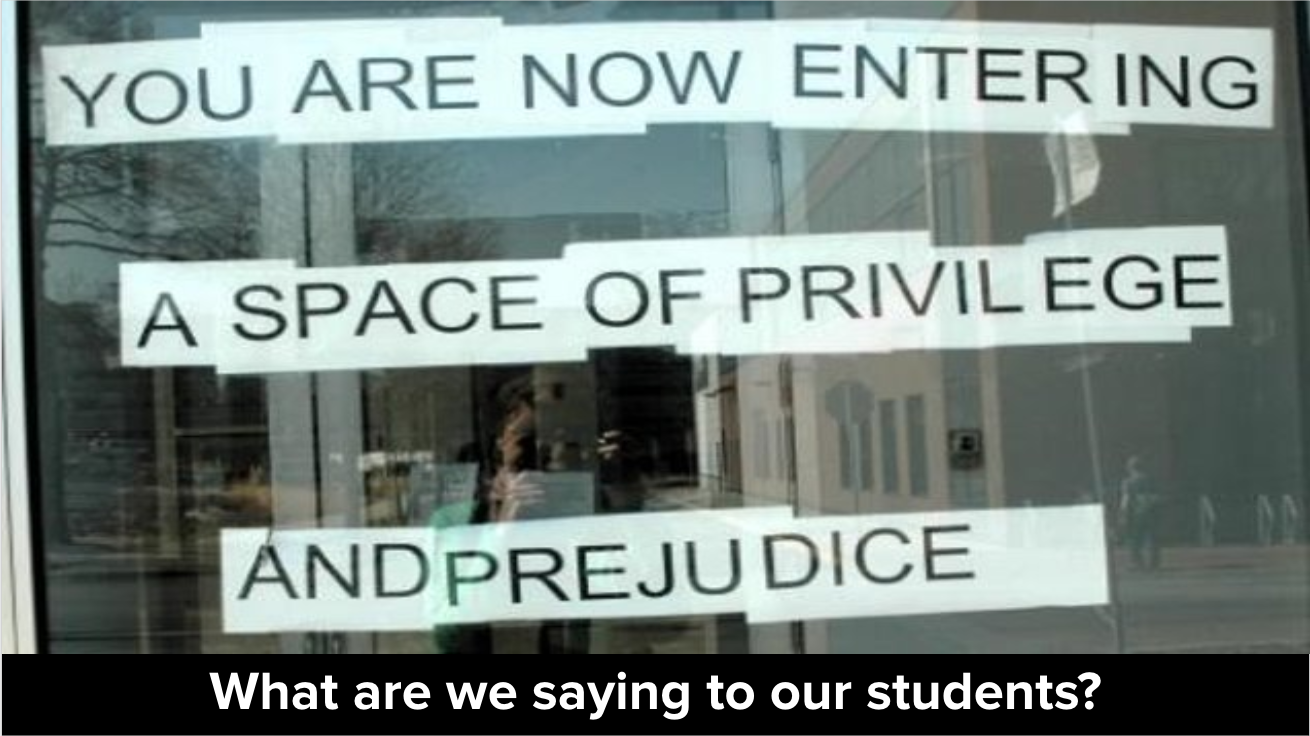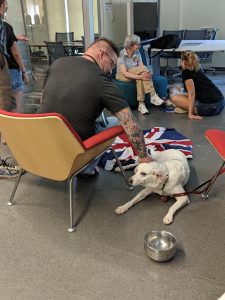I just returned from my first Digital Pedagogy Lab (DPL) at the University of Mary Washington. As part of the inclusive design course (taught by Kevin Gannon), I got to reflect on teaching and learning with people in a variety of positions at different types of colleges and universities across the world. We returned to Paulo Freire, bell hooks, Henry Giroux and other pedagogues I haven’t encountered since my days in graduate school so it felt like returning to old friends. But this time, we talked about them in the context of critical digital pedagogy, which is a whole new field for me.
In the inclusive design course, we broke down systems and structures within classrooms and within higher ed as a whole that reinforce inequities. We shared personal stories from our own educational experiences of being excluded; many of us got choked up by the end of Day 1. All week long, Kevin asked us provocative questions that challenged us to think about designing inclusively for diversity in its many forms. We radically re-imagined basic structures of courses (grading, attendance policies, deadlines for assignments, writing and composition). We talked about strategies for handling “hot moments” in class, like racist comments raised during discussions. We thought about how we could design learning spaces in which students felt welcomed, like they mattered and that gave them a sense of hope (that they had agency and pathways to pursue outcomes important to them).
The course, plus two keynotes, were intellectually intense and emotional at times for me and other participants. DPL even hosted therapy dogs to provide us with a few moments of comfort.
In the inclusive design course, we were each tasked with writing an “inclusive design manifesto” by the end of the week (see Kevin’s teaching manifesto). This was a difficult task for me because much to my surprise, heavy personal feelings of being excluded from teaching at my current institution bubbled up. It was hard for me to think about inclusive design for others when I felt so excluded myself. On day 3 when we had time to work on our manifestos, I wrote extensively about the anger I was feeling:
I felt so excluded (and isolated) when I was an adjunct. The title of “lecturer” stated on my contract was misleading for a newly minted PhD who wasn’t aware of the adjunctification of higher ed. I always felt misinformed about what it would take to get a more secure “senior lecturer” position because no one had ever pointed me to the faculty handbook. I felt excluded when opportunities for professional development and networking were held on the days I was at home with my daughter. Were adjuncts even invited or welcomed to those events?
Now as a staff member, I still often feel excluded. My expertise is excluded when faculty members don’t recognize that I have a PhD (with a concentration in adult education) or teaching experience at the same institution. I feel excluded from teaching when the instructional design expertise of my colleagues here and at our center for teaching and learning is unrecognized, untapped and undervalued. Here I am, an instructional designer, having this intense educational experience around inclusive design, but I know it will be hard to find a space on campus where I can have this conversation with faculty when I get home.
All of these feelings of exclusion are painful because I care deeply about the liberal arts and about teaching and learning and it sucks when my institution makes it difficult for me to be involved in or to support those things in a meaningful way, no matter what my position title is. After all, it was my own significant liberal arts learning experiences as an undergraduate that inspired me to get a PhD in pursuit of a “life of the mind.” But why is it so hard for people like me with expertise in teaching and learning to support the academic mission from the other side (i.e. the non-faculty side) at a liberal arts college where learning is supposed to be happening everywhere?
I touched base with Kevin about my progress on my manifesto and he said it was OK to feel angry and that manifestos often start from a place of rage. Feeling validated, I had a turning point when I realized that I still occupy a space within my institution. I might be excluded in many ways, but I can take steps to design that space in an inclusive way. One space I often find myself in are 1:1 instructional consultations with faculty members. So I began to think about how I can integrate inclusive design into my instructional consultation practice.
What resulted was not so much a manifesto, but a list of “ah-ha” moments that happened for me throughout DPL that soothed my feelings of being excluded and a list of questions to guide me when I got home.
My Ah-Ha Moments
The exclusion I feel stems from structures within higher education and academia. It is not my fault that I am left out, or as Robin DeRosa so eloquently stated during her DPL Keynote “You are not undervalued (only) because you work with assholes.” (Assholes here refers to administrators and bureaucrats who are part of a larger trend of outsourcing people knowledge and resources in higher ed who don’t look inward to their community on campus)
I won’t be able to fix those structures now, or on my own, but I can still be critical of them and call them into question when opportunities to do so arise.
As academic support staff, I now occupy this liminal space that faculty can’t always see, or don’t realize exists. I care deeply about the liberal arts and it’s OK if I seem to care more about teaching and learning than they do. Remember, they might not appear to care because they are under immense pressures imposed on them by the system too.
Sometimes it’s a painful space to occupy, to be excluded from the thing I care so much about (teaching and learning). But try to revel in the opportunity this space affords: I get to constantly learn about and reflect on the practice of teaching and learning without the pressure of being on the tenure track. This liminal space is a place of opportunity for you to help faculty critically reflect on their teaching practices and perspectives, and (maybe) on the structures that exclude the expertise of staff members like me. You are in a position to inclusively design spaces beyond the classroom for faculty, and perhaps by modeling inclusion as a pedagogical ethic, you will start to feel less excluded yourself.
Questions to Guide Me
- I often have one-on-one instructional consultations with faculty members. What might inclusive design look like in this space?
- If inclusive design means making people feel welcomed and like they matter, how can I show faculty members that their work matters? That their teaching matters? That what they are trying to accomplish in their classroom matters?
- How can I design my conversations to recognize faculty’s previous classroom experiences?
- How can I create a space of trust, safety and security when I meet with faculty members?
- How do I make space for them to tell me how they learn best?
- How can I establish transparency in what I’m doing? (They often seek immediate answers, but I begin by asking a lot of questions which they may not expect)
- Hope is the feeling that you have the agency and pathways that will lead you to a desired outcome. How can I create a hopeful learning space for faculty?
- How can I nudge faculty members to think about inclusive design? Might guiding questions raise questions of inclusivity for them?
- How can I maintain a sense of hope (agency and pathways) for myself and that I matter, even when I don’t feel welcomed?

